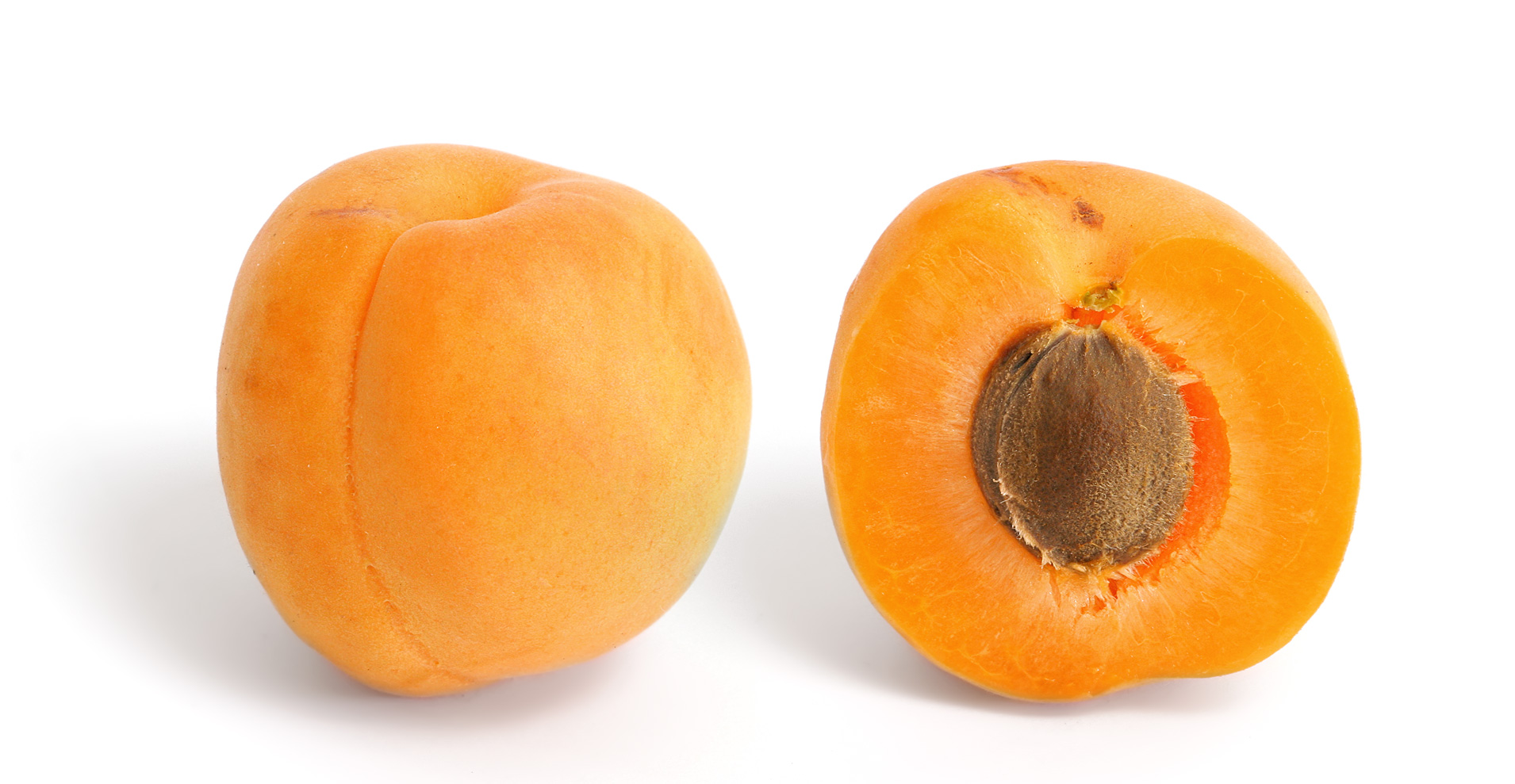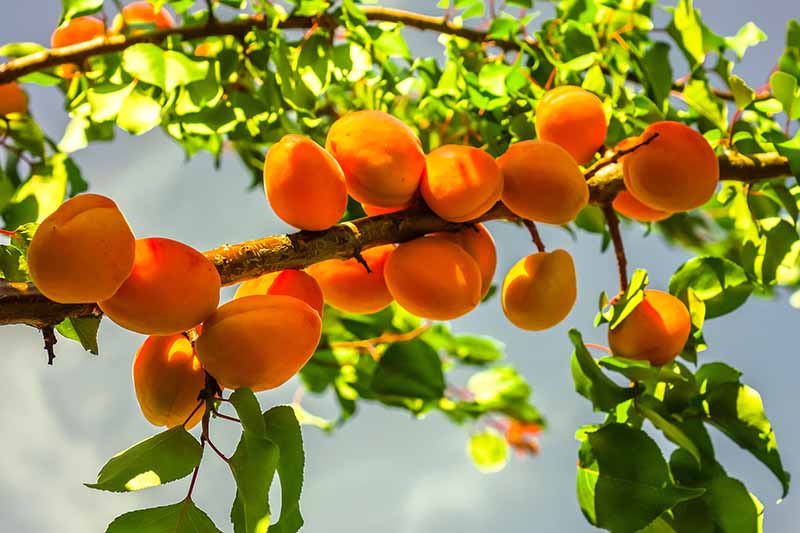How to grow Apricots from seed, Apricots, with their delicate flavor and juicy texture, are a delight to grow in your own backyard. While many gardeners opt for purchasing saplings or young trees from nurseries, growing apricots from seeds can be a rewarding and cost-effective endeavor. In this comprehensive guide, we’ll walk you through the step-by-step process of growing apricots from seed, from selecting the right seeds to nurturing your saplings into healthy, fruit-bearing trees.

Selecting the Right Apricot Seeds
Before you embark on your apricot-growing journey, it’s essential to start with quality seeds. You can obtain apricot seeds from fresh fruit purchased at the grocery store or farmer’s market. Opt for organic apricots whenever possible, as they are free from harmful chemicals and pesticides that could affect seed viability. With these high-quality seeds, you’ll be on the right track to mastering how to grow Apricots from seed.
When selecting apricot seeds, choose ones that are plump, firm, and free from blemishes or signs of mold. Keep in mind that not all apricot seeds will germinate successfully, so it’s a good idea to collect several seeds to increase your chances of success.
Preparing Apricot Seeds for Planting
Once you’ve gathered your apricot seeds, it’s time to prepare them for planting. Start by removing the seeds from the fruit and washing them thoroughly to remove any pulp or residue. After washing, allow the seeds to air dry completely before proceeding.
Some gardeners recommend scarifying apricot seeds to improve germination rates. Scarification involves gently scratching or nicking the seed coat to help water penetrate and kickstart the germination process. You can accomplish this by carefully filing or sanding one end of the seed until you see a slight change in color.
Choosing the Right Growing Medium
Apricot seeds thrive in well-draining soil that is rich in organic matter. A sandy loam or loamy soil mix is ideal for apricot seed germination and early growth. If you’re planting apricot seeds indoors, choose a container with drainage holes to prevent waterlogging.
Fill your chosen container with the potting mix, leaving about an inch of space at the top for watering. Moisten the soil lightly before planting the apricot seeds.
How to grow Apricots from seed, Planting Apricot Seeds
Planting apricot seeds is a straightforward process. Make a small indentation in the soil with your finger or a pencil, about an inch deep. Place the apricot seed in the indentation, then cover it lightly with soil.
Water the newly planted seeds gently until the soil is evenly moist but not waterlogged. Place the container in a warm, sunny location, such as a south-facing windowsill or greenhouse, to encourage germination.

Caring for Apricot Seedlings
Once your apricot seeds have germinated, it’s time to provide them with the care they need to thrive. Here are some essential tips for nurturing apricot seedlings:
Watering: Keep the soil consistently moist but not waterlogged. Water the seedlings whenever the top inch of soil feels dry to the touch.
Light: Apricot seedlings require plenty of sunlight to grow strong and healthy. Ensure they receive at least six to eight hours of direct sunlight per day.
Temperature: Apricot seedlings prefer warm temperatures, ideally between 70-85°F (21-29°C).
Protect them from drafts and sudden temperature fluctuations
Fertilization: Once the seedlings develop their first set of true leaves, you can begin fertilizing them with a balanced liquid fertilizer diluted to half strength. Repeat every two weeks during the growing season.
Thinning: If you planted multiple seeds in the same container, thin out the weakest seedlings to allow the strongest ones more room to grow.
Transplanting: Once the seedlings have grown to about 6 inches tall and have several sets of true leaves, you can transplant them into larger containers or into the garden if the weather permits.
Transplanting Apricot Seedlings Outdoors
When transplanting apricot seedlings outdoors, choose a sunny, well-drained location with fertile soil. Ensure the planting site is free from competing weeds and has adequate space for the apricot tree to grow to its full size.
Dig a hole twice as wide and just as deep as the root ball of the seedling. Gently remove the seedling from its container, taking care not to disturb the roots too much. Place the seedling in the center of the hole and backfill with soil, pressing down gently to remove any air pockets.
Water the newly transplanted seedling thoroughly to help settle the soil around the roots. Mulch around the base of the tree to retain moisture and suppress weeds.
Pruning and Training Apricot Trees
Proper pruning and training are essential for shaping apricot trees and promoting healthy growth and fruit production. Here are some key tips for pruning and training apricot trees:
Initial Pruning: In the first year after transplanting, focus on removing any dead or damaged branches and shaping the tree’s overall structure. Aim for an open-center or vase shape to allow sunlight and air to penetrate the canopy.
Subsequent Pruning: In subsequent years, prune apricot trees during the dormant season (late winter to early spring) to remove any crossing or overcrowded branches. Thin out the canopy to improve airflow and reduce the risk of disease.
Training: Use stakes or trellises to support young apricot trees and encourage upright growth. Train the main trunk to grow straight and stake any lateral branches that may need support.
Renewal Pruning: As apricot trees age, they may develop woody or unproductive branches. Conduct renewal pruning every few years to remove older wood and stimulate new growth.
Pest and Disease Management
Like all fruit trees, apricots are susceptible to a range of pests and diseases that can affect their health and productivity. Here are some common pests and diseases to watch out for:
Aphids: These small, soft-bodied insects feed on apricot leaves and shoots, causing distortion and yellowing of the foliage. Control aphids with insecticidal soap or horticultural oil.
Fungal Diseases: Apricot trees are prone to fungal diseases such as powdery mildew, brown rot, and leaf curl. Practice good sanitation by removing and disposing of infected plant material, and apply fungicides as needed according to label instructions.
Fruit Pests: Birds, squirrels, and other animals may be attracted to ripening apricots. Protect your fruit with bird netting or deterrents to prevent damage.

Harvesting Apricots
With proper care and maintenance, apricot trees typically begin producing fruit within 3-4 years of planting. Apricots are ready to harvest when they are fully ripe and have a deep orange color. They should easily detach from the tree with a gentle twist.
Harvest apricots carefully to avoid bruising or damaging the fruit. Store ripe apricots in the refrigerator for up to a week or preserve them by drying, freezing, or canning.
Conclusion
Growing apricots from seed is a rewarding and enjoyable experience that allows you to witness the entire lifecycle of these delicious fruit trees. By following the steps outlined in this guide and providing your apricot seedlings with the care they need

